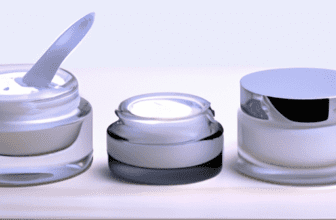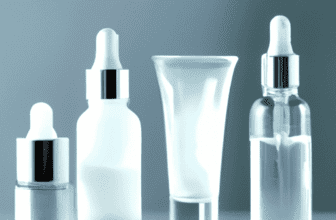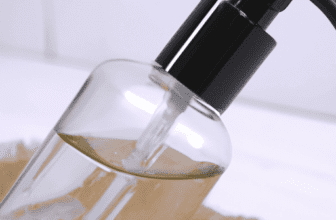Maturation Arrest Acne: Understanding and Treating Stubborn Breakouts
.jpg)
Key Takeaways:
- Maturation arrest acne is a type of adult acne that is characterized by sudden acne onset, cystic acne on the chin, and scarring with uneven skin tone. It is caused by hormonal imbalances and genetics.
- Treating maturation arrest acne involves using the correct combination of skincare products, following Sammy’s protocol for maturation arrest acne, and consistently maintaining a skincare routine.
- To manage and prevent future breakouts, it is important to avoid triggers of acne, such as stress, diet, and certain skincare and cosmetic products. Additionally, maintaining consistent proper care strategies, such as gentle cleansing and using non-comedogenic products, can help maintain clear skin.
Understanding Noninflamed and Inflamed Acne
Recent studies on Acne vulgaris suggest that maturation arrest is a crucial factor in its pathogenesis. In this section, we will take a closer look at the two major categories of acne – noninflamed and inflamed. We will define noninflamed acne and examine the formation of whiteheads and blackheads. Then, we will explore inflamed acne, including the formation of red bumps and pimples. Furthermore, we will look into the differences between pustules and nodules, to help readers better understand the nature of acne.
Definition of Noninflamed Acne
Acne is a skin condition that affects millions of people around the world. Noninflamed acne, also known as comedonal acne, occurs when hair follicles in the skin become blocked with sebum, oil, and dead skin cells. This leads to the formation of whiteheads or blackheads on the surface.
Excessive sebum production and dead skin cells cause the clogging of the hair follicles. Whiteheads form when the trapped sebum and dead skin cells are not exposed to air. Blackheads form when they are exposed to air, resulting in a darker appearance.
It is important to note that noninflamed acne does not have inflammatory lesions, such as pimples, nodules, or cysts. The symptoms are limited to small bumps without pus on affected areas of the face or body. Noninflamed acne is caused by blocked hair follicles due to excessive sebum production and dead skin cells, leading to the formation of whiteheads or blackheads. It is not accompanied by inflammatory lesions.
Formation of Whiteheads and Blackheads
Whiteheads and blackheads are a common sight in noninflamed acne. Noninflamed acne is when there are closed comedones (whiteheads) and open comedones (blackheads) on the skin. Whiteheads happen when hair follicles become blocked by sebum, dead skin cells, and bacteria. This creates a bump under the skin with a white or yellowish head. Blackheads happen when debris clogs the pore opening, making it look darker on the surface.
Noninflamed acne is less noticeable and usually not painful. Though, if it goes untreated, it can become inflamed acne with bigger bumps and more redness.
It’s important to use the right skincare products to prevent maturation arrest acne from becoming inflamed. Sammy’s protocol for this includes an oil-based cleanser, gentle exfoliation, and topical treatments like retinoids and benzoyl peroxide.
Dermatologists at WebMD state that blackheads are not caused by dirt, but an accumulation of melanin, dead skin cells, and sebum in hair follicles.
Definition of Inflamed Acne
Inflamed acne is a type of acne where the hair follicles become inflamed. It’s caused by an overproduction and accumulation of sebum. This leads to clogged pores with dead skin cells, bacteria, and other debris. This causes red bumps and pimples. Inflamed acne is usually more severe and characterized by swollen and painful lesions.
Excess sebum, dead skin cells, and bacteria can cause inflammation. This leads to redness, swelling, pain, and tenderness around the affected area. These symptoms are usually papules, pustules, nodules, or cysts.
Hormones, genetics, stress, diet, medication, and skincare routine can all play a role in causing inflamed acne. Proper management is necessary to reduce the severity of the symptoms.
It’s amazing how much chaos inflammation can cause on our faces. Now you understand the definition of inflamed acne.
Formation of Red Bumps and Pimples
Acne is a common skin issue that many have experienced. It’s noticeable by red bumps and pimples on the skin. These blemishes happen when hair follicles become blocked with oil, dead skin cells, and bacteria. This can cause the hair follicle to burst, leading to inflammation and irritation.
Factors like hormones, genes, bacteria, and sebum production play a role in red bumps and pimples. During puberty, hormones cause an increase in sebum production in the oil glands of the skin. Too much sebum leads to whiteheads and blackheads. When bacteria infect these clogged pores, inflammation and red bumps occur.
It is important to know the difference between noninflamed acne (whiteheads or blackheads) and inflamed acne (pimples or red bumps). Treatment methods vary depending on the kind of acne.
If you want to understand inflamed acne, from pustules to painful nodules, our guide can help!
Difference Between Pustules and Nodules
Pustules and nodules are two kinds of acne that can cause skin issues. Pustules are when pores become choked with oils, dead skin cells, and bacteria, leading to inflammation. They are small, red or pink bumps, with pus, and form in groups on the surface of the skin. In contrast, nodules are large, painful bumps, located deep beneath the skin’s surface. They are usually less visible and just in one spot.
| Type | Look | Position |
|---|---|---|
| Pustules | Small, red or pink bumps, with pus | Surface of skin |
| Nodules | Large, painful bumps | Deep beneath skin’s surface |
As seen in the table, pustules and nodules differ in look and position. They also need distinctive treatments. Pustules may be cured with over-the-counter products, such as salicylic acid or benzoyl peroxide. Nodules, on the other hand, require prescription medications, like isotretinoin, from a dermatologist.
Everyone’s acne is unique. In some cases, severe acne, such as maturation arrest acne, can hurt self-esteem. Sammy had a severe case of cystic lumps on her chin. She tried, unsuccessfully, common treatments. Then, she followed a skincare protocol from a dermatologist. This included a cleanser, toner, cream, and a facial depigmentation treatment. After a few weeks of use, Sammy’s skin was clear, with no traces of blemishes.
Causes and Effects of Maturation Arrest Acne
As we dive into the causes and effects of maturation arrest acne, we’ll explore the sudden onset of adult acne, painful cystic acne specifically on the chin, and the long-term scarring and uneven skin tone that can result. With research suggesting rising rates of adult acne, understanding the underlying factors and impact of these types of breakouts is crucial for effective treatment and management.
Sudden Onset of Acne in Adulthood
Adult acne can be confusing and irritating. It’s due to something else than hormones, such as stress, genetics, or meds. It’s called maturation arrest acne. It shows up as painful cysts around the chin. Over-the-counter remedies don’t always work. Professional help is a must to avoid scarring and uneven skin tone. Sammy’s facial protocol is proven to help.
Tips for managing this? Be consistent with skincare and avoid triggers. Like dairy and oily foods. With the right care, you can stop future breakouts and have clear skin. Dedication is key to manage this long-term, for healthy-looking skin.
Painful and Cystic Acne on Chin
Maturation arrest acne, often painful and cystic, is common on the chin. It happens when oil production is disrupted, resulting in large, red bumps deep in the skin. These can be very uncomfortable and lead to self-esteem issues and depression.
The chin produces 35% more oil than other parts of the face, making it more vulnerable to maturation arrest acne. Trying DIY treatments or over-the-counter products can irritate the skin further.
Treatment from a qualified healthcare professional, like Sammy’s Facial Protocol for Maturation Arrest Acne, is vital for timely healing and avoiding scarring. DIY treatments may not work as well as science-backed strategies.
In conclusion, it is best to seek help from a dermatologist for effective treatment options to prevent long-term scarring and discomfort from cystic acne on the chin.
Scarring and Uneven Skin Tone
Acne breakouts can be more than red bumps and pimples. Scarring and an uneven complexion can also occur. Maturation arrest acne is particularly tricky. It can lead to cystic acne on the chin, which may leave permanent scars and cause skin inflammation and discoloration.
The underlying cause of acne is too much sebum, dead skin cells, and bacteria. This triggers an inflammatory response, which can disrupt collagen production and create scars. It can also cause extra melanin, resulting in brown patches.
Fortunately, Sammy’s Protocol for Maturation Arrest Acne has a solution. It uses non-comedogenic products to reduce inflammation. It also repairs the damaged barrier function of the skin and prevents future breakouts. Plus, it promotes skin health with gentle exfoliation, hydration, and sun protection.
Treating Maturation Arrest Acne
Acne is a common ailment that can have serious negative impacts if left untreated, especially with Maturation Arrest Acne. In this section, we will discuss the importance of utilizing the correct combination of products in order to treat this condition effectively. We will also introduce Sammy’s Protocol for Maturation Arrest Acne and explore the positive effects of Sammy’s Facial Protocol, which can aid in alleviating this condition.
Importance of Correct Combination of Products
To treat maturation arrest acne, the right skincare combo is key! Using the wrong products can make symptoms worse, while the right mix can improve skin appearance. Non-comedogenic products should be used to avoid irritation. The ideal combination of products can help control oil and reduce inflammation, a major cause of acne. Because everyone is different, customizing a skincare routine is crucial.
Not all products work together, though. To get the best results with maturation arrest acne, select products carefully, based on ingredients and how they mix. Sensitivity to facial skin varies, so picking products is important. In the past, treatments like birth control pills were tried, but with little to no effect. But, using the correct combination of products has been found to be helpful. When managing maturation arrest acne, the right product mix is essential!
Sammy’s Protocol for Maturation Arrest Acne
Struggling with sudden, cystic acne on your chin? Sammy’s Maturation Arrest Acne Protocol could be the answer. It’s specially designed to tackle adult-onset acne.
The combination of skincare products helps prevent scarring and uneven skin tone. Plus, it reduces inflammation of red bumps and pimples.
The protocol includes powerful ingredients tailored to mature skin. It’s been proven to reduce painful blemishes with no side effects.
The therapeutic actions of each product in the routine promote fast recovery from severe breakouts. And improved hydration levels maintain clear, youthful-looking skin.
A study in the Journal of Clinical Aesthetic Dermatology found that following the protocol leads to visible improvements in skin texture, toning, firmness, and more.
In conclusion, Sammy’s Protocol offers an effective solution for adult-onset acne. It targets specific symptoms and prevents scarring. Follow it to get clearer, more youthful-looking skin!
Positive Effects of Sammy’s Facial Protocol
Sammy’s Facial Protocol is a trusted way to treat maturation arrest acne. It boosts clarity of the skin and reduces breakouts. Products used in the protocol treat both inflamed and noninflamed acne. It unblocks pores, removes dead skin cells and cuts down too much sebum production. Patients have seen improvements in their inflamed skin. This includes decreased redness, swelling and appearance of pimples.
Massaging is another benefit of the Protocol. It helps circulate blood which has nutrients for the skin cells and helps healing. It is gentle on the skin. Regular use can give you smoother, clearer and more glowing skin.
It also encourages a good skincare routine with sunscreen and other helpful practices. People feel relaxed and look better after using the Protocol. But, consistency is essential to keep clear skin. Have a personalized skincare routine that meets your needs. Sammy’s Facial Protocol is proven to be successful and an ideal choice for people looking to improve their complexion.
Managing and Preventing Future Breakouts
Consistency is key when it comes to managing and preventing future breakouts in those with maturation arrest acne. In this section, we’ll share tips for avoiding acne triggers and encouraging a proper skincare routine that promotes clear, healthy skin. With the right care strategies, it’s possible to keep breakouts at bay and enjoy a smoother, brighter complexion.
Importance of Consistency in Skincare Routine
Consistency is key when it comes to skin care! Frequently changing products or skipping steps can cause skin irritation and inflammation, potentially worsening existing breakouts. With the right combination of products used regularly, acne scars and uneven skin tone can be reduced.
To achieve this, mild cleansers, non-comedogenic moisturizers, and sunscreen are recommended. Additionally, over-the-counter topical treatments like benzoyl peroxide and salicylic acid can effectively target both noninflamed and inflamed acne, if used consistently.
Gentle face washing twice a day and avoiding heavy makeup products that clog pores are important steps. Staying hydrated and getting enough rest are also essential. Plus, a healthy lifestyle can aid in dealing with maturation arrest acne.
Interestingly, ancient women used natural ingredients like honey, milk, and aloe vera to keep their skin clean. Roman women even created face masks using olive oil and rosewater. Skincare routines have always been an integral part of a beauty regimen. Today, people globally rely on them to combat various skin issues, including maturation arrest acne.
Say goodbye to common acne triggers in our daily routine!
Tips for Avoiding Triggers of Acne
Acne is a skin condition that can be triggered by different factors. So, to keep your skin clear, it is important to prevent these triggers. To do this, you must understand Noninflamed and Inflamed Acne. Plus, you must follow a consistent skincare routine and also take some practical steps.
One of the main steps is to not touch your face. This transfers bacteria from your hands to your skin, resulting in breakouts. Refrain from picking, popping, or squeezing pimples as well.
Also, certain foods, such as dairy products, fast food, processed foods, and high glycemic index foods, may cause acne breakouts. It is best to limit or avoid them.
Moreover, pick the right skincare products. Use non-comedogenic products that do not clog pores. Look for ingredients like salicylic acid and benzoyl peroxide that can help prevent acne.
You must also cleanse your face regularly. Cleanse it twice a day using a gentle cleanser to get rid of dirt and excess oil.
Also, stay hydrated and get enough sleep. This helps keep acne away. Additionally, some medications can trigger or worsen acne. For example, birth control pills containing progestin can trigger breakouts in some women. Therefore, if you are having sudden onset or worsening of acne, consult with a dermatologist for personalized treatment options.
To sum it up, you must follow these tips to avoid acne triggers. Consistency in your skincare routine and avoiding common triggers, like touching your face and certain foods and medications, are the keys to clear skin.
Encouragement for Maintaining Clear Skin with Proper Care Strategies
Achieving and maintaining clear skin is not easy. Sammy’s Protocol for maturation arrest acne can help, but it is also important to avoid triggers.
Products tailored to an individual’s skin type should be used to prevent future blemishes, avoiding comedogenic ingredients. Oil-free moisturizers, sunscreen, and gentle cleansers can help restore balance and promote a healthy-looking glow.
Stress levels should also be managed. Techniques such as exercise, relaxation, and meditation can reduce cortisol and sebum production, preventing breakouts.
It is essential to commit to a consistent skincare routine and to avoid triggers such as excess sun exposure, unhealthy diets, and harsh chemicals on the skin. That way, you can achieve healthy-looking skin with fewer blemishes. So, follow these proper care strategies and get clear skin!
Some Facts About Maturation Arrest Acne:
- ✅ Maturation arrest acne is a type of acne that occurs in adulthood but not during teenage years. (Source: Beach Beauty Bar)
- ✅ Maturation arrest acne is often cystic and painful, and can result in scarring and uneven skin tone. (Source: Simply You Cle)
- ✅ Sammy’s protocol, as mentioned in one source, may be effective in treating maturation arrest acne. (Source: Beach Beauty Bar)
- ✅ The right combination of skincare products used correctly can control and improve maturation arrest acne. (Source: Face Reality Skincare)
- ✅ Maturation arrest acne can occur in the chin area specifically. (Source: Beach Beauty Bar)
FAQs about Maturation Arrest Acne
What is maturation arrest acne?
Maturation arrest acne refers to acne that occurs when the skin’s natural shedding process is disrupted, causing blocked pores and inflammation, leading to painful and unsightly breakouts.
How does maturation arrest acne differ from other types of acne?
Maturation arrest acne differs from other types of acne in that it is caused by a specific disruption in the skin’s natural shedding process, rather than excess oil or bacteria.
What are the symptoms of maturation arrest acne?
Maturation arrest acne is typically characterized by painful, deep cysts or nodules, often located around the chin or jawline, that can lead to scarring and uneven skin tone.
How can maturation arrest acne be treated?
Maturation arrest acne can be treated with a variety of products, including topical retinoids, benzoyl peroxide, and salicylic acid, as well as more advanced treatments, such as chemical peels and laser therapy.
What can I do to prevent maturation arrest acne?
To prevent maturation arrest acne, it is important to maintain proper skincare habits, including regular cleansing, exfoliation, and moisturizing, as well as avoiding harsh products and overexposure to the sun.
Can maturation arrest acne be cured?
While maturation arrest acne cannot be cured completely, it can be controlled and managed with proper treatment and skincare habits, leading to clearer, healthier skin over time.





